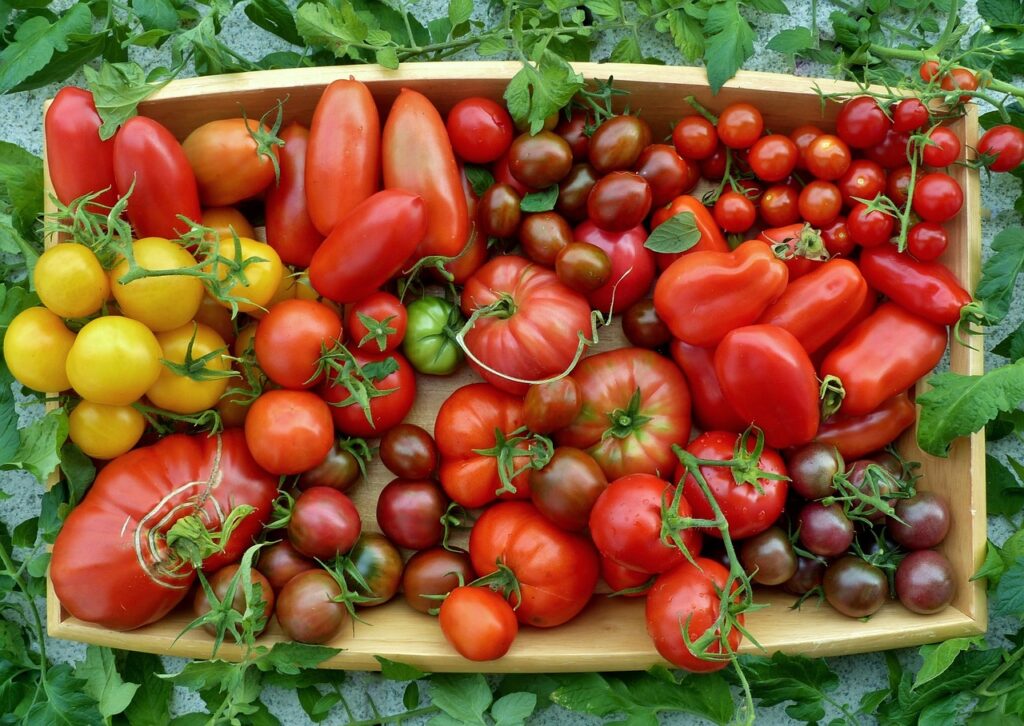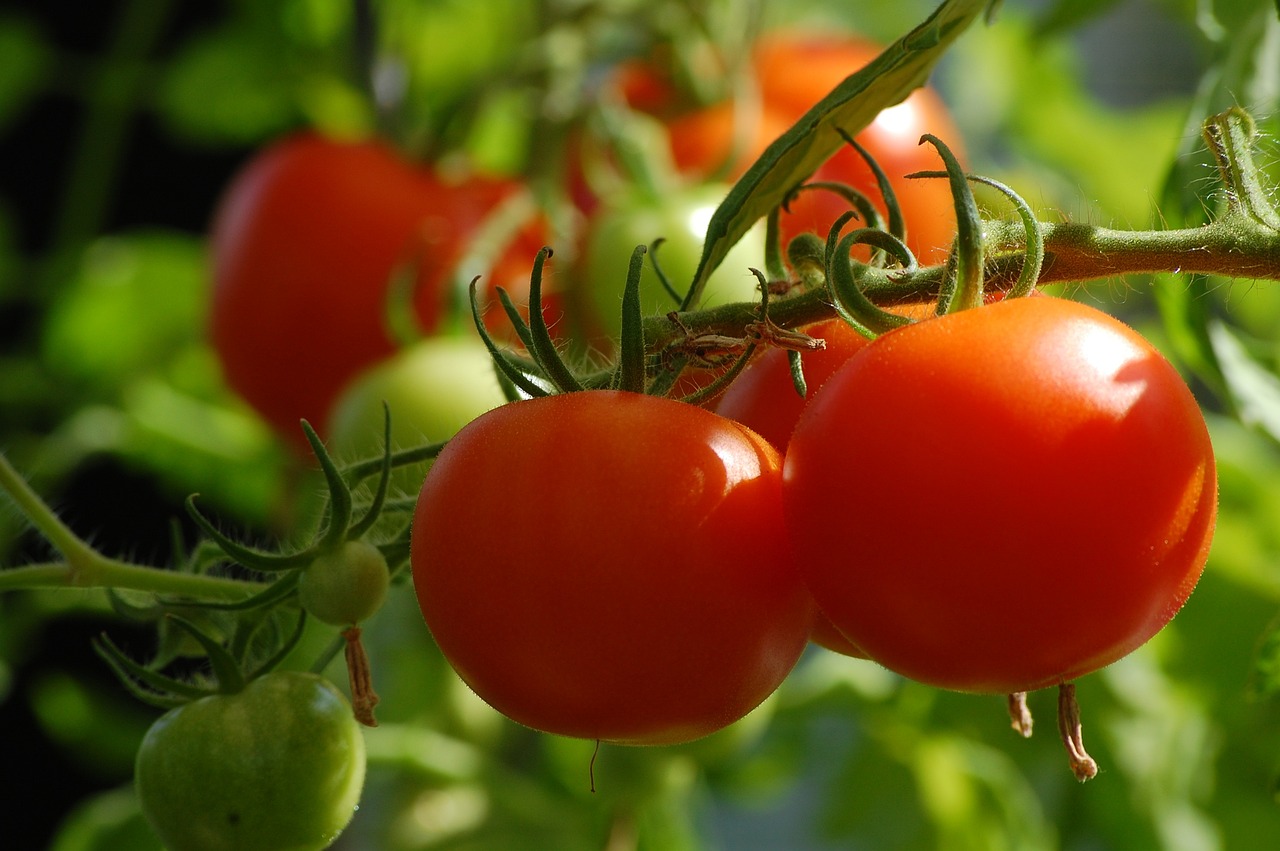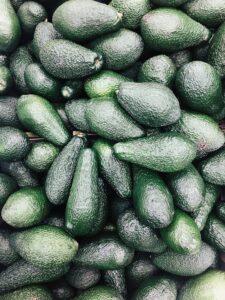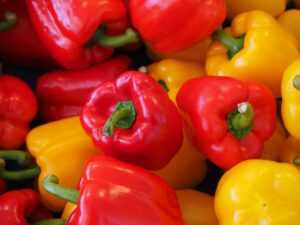|
Getting your Trinity Audio player ready...
|
Growing tomatoes at home indoors year-round can be a rewarding and enjoyable endeavor. Cultivating this versatile fruit (yes, it’s a fruit!) allows you to enjoy fresh, flavorful tomatoes throughout the year, even in colder climates. In this comprehensive guide, we will delve into the step-by-step process of successfully growing tomatoes indoors, covering everything from choosing the right varieties to harvesting your homegrown produce.
Introduction
Growing tomatoes indoors year-round is an excellent way to have a continuous supply of fresh, tasty tomatoes, regardless of the season. Indoor gardening not only allows you to extend the growing season but also provides more control over growing conditions, resulting in healthier and more productive plants.

Selecting the Right Tomato Varieties
Selecting suitable tomato varieties is crucial for successful indoor gardening. Some varieties are better suited for indoor growing due to their growth habits and size. Here are a few recommendations:
- Determinate Varieties:
- Ideal for indoor growing as they have a more compact size and predictable growth, making them suitable for containers.
- Cherry or Grape Tomatoes:
- Varieties like “Sweet 100” or “Sun Gold” are popular choices for indoor gardening due to their small fruit size and prolific production.
- Patio or Bush Varieties:
- These are specifically bred for small spaces and container gardening, making them well-suited for indoor cultivation.
Creating the Ideal Indoor Environment
- Temperature:
- Maintain a temperature range of 65-75°F (18-24°C) during the day and slightly cooler at night.
- Humidity:
- Tomatoes prefer moderate humidity levels; consider using a humidifier if needed, especially in dry indoor environments.
- Ventilation:
- Ensure good air circulation with the help of fans to prevent fungal diseases and promote healthy growth.
- Indoor Air Quality:
- Keep the indoor area well-ventilated and free from pollutants that can hinder plant growth.
Choosing Suitable Containers and Soil
- Containers:
- Opt for large, sturdy containers with good drainage holes to prevent waterlogging.
- Fabric grow bags or plastic pots are popular choices for indoor tomato growing.
- Soil:
- Use a well-draining potting mix with added organic matter for optimal growth.
- Avoid garden soil, as it can compact in containers and hinder root growth.
Providing Adequate Lighting
- Natural Light:
- Place your indoor garden near south-facing windows to maximize natural light exposure.
- Rotate the containers regularly to ensure all sides of the plant receive adequate light.
- Supplemental Lighting:
- Consider using grow lights, such as LED or fluorescent, to provide sufficient light during the darker months or in spaces with limited natural light.
Watering and Humidity
- Watering:
- Keep the soil consistently moist but not waterlogged. Aim for about 1-1.5 inches of water per week.
- Adjust the watering frequency based on the size of the container and the plant’s growth stage.
- Humidity:
- Maintain a moderate level of humidity by misting the plants or placing a tray of water nearby.
Feeding and Fertilizing
- Fertilizer:
- Use a balanced, water-soluble fertilizer with essential nutrients like nitrogen, phosphorus, and potassium.
- Follow the recommended dosage and application frequency specified on the fertilizer packaging.
- Micro-nutrients:
- Consider using a micronutrient supplement to ensure a well-rounded nutrient profile for your tomato plants.
Pruning and Training Your Tomato Plants
- Pruning:
- Regularly pinch off suckers (side shoots) to encourage a single main stem and improve air circulation.
- Remove any yellowing or diseased leaves to maintain plant health.
- Training:
- Use stakes, trellises, or cages to support the plants and guide their upward growth.
- Gently tie the stems to the supports as the plant grows to prevent them from drooping or breaking.
Dealing with Pests and Diseases
- Pests:
- Inspect your plants regularly for signs of pests such as aphids, whiteflies, or spider mites.
- Use natural remedies like neem oil or insecticidal soap to deter pests, or introduce beneficial insects like ladybugs.
- Diseases:
- Maintain good airflow and avoid overcrowding to prevent fungal diseases like powdery mildew.
- If signs of disease appear, promptly remove affected leaves or plants to prevent the spread.
Pollination Techniques
- Natural Pollination:
- Gently shake the plants or tap the flowers to aid in natural pollination.
- Hand Pollination:
- Use a small brush or cotton swab to transfer pollen from one flower to another, especially for indoor plants where natural pollinators are absent.
Support and Staking
- Staking:
- Stake your tomato plants to provide support and prevent sprawling.
- As the plant grows, tie the main stem to the stake using soft ties to avoid damage.
- Caging:
- Use tomato cages to support the plants and keep them upright as they grow.
Harvesting Your Indoor Tomatoes
- Timing:
- Harvest tomatoes when they reach their mature color (e.g., red, yellow, orange) depending on the variety.
- Gently twist or cut the tomatoes from the plant to avoid damaging the stem.
- Ripening:
- If needed, place unripe tomatoes in a brown paper bag with a ripe banana or apple to speed up the ripening process.
Troubleshooting Common Issues
- Yellowing Leaves:
- Could indicate overwatering, nutrient deficiency, or disease. Adjust watering and nutrient levels accordingly.
- Blossom End Rot:
- Caused by calcium deficiency or inconsistent watering. Ensure consistent watering and use calcium-rich fertilizers.
Delicious Recipes Using Homegrown Tomatoes
- Caprese Salad:
- A classic Italian salad with fresh tomatoes, mozzarella cheese, basil leaves, olive oil, and balsamic vinegar.
- Roasted Tomato Soup:
- A comforting soup made with roasted tomatoes, garlic, onions, and a blend of herbs.
Conclusion
Growing tomatoes indoors year-round allows you to enjoy the fruits of your labor regardless of the weather outside. By selecting suitable varieties, providing the right environment, and giving your plants proper care and attention, you can cultivate a bountiful



